Una encantadora armonía de matices fucsia, violeta y rosa, la orquídea inspira confianza y emana gran alegría. Es un púrpura cautivador, uno que te atrae con su encanto cautivador.
An enchanting harmony of fuchsia, violet and pink hues, orchid inspires confidence and exudes great joy. It is a captivating purple, one that draws you in with its captivating charm.
Leatrice Eiseman in Expandetumente
¡Hola amigos de #AmazingNature! Es siempre un gusto poder saludarles a través de la oportunidad que brinda esta Comunidad y desearles, hoy más nunca, mis saludos y deseos por que pasen una Feliz Navidad, para todos quienes acostumbren celebrarla. Igualmente, les deseo a todos que, en estos últimos días de este año, ¡estén presente en cada uno de ellos el bienestar y la felicidad!
Y para el disfrute de todos, hoy les traigo las imágenes de la exótica y hermosa Orquídea Terrestre Filipina o, sencillamente, Orquídea Filipina. Entre los diversos nombres comunes por los cuales es reconocida tenemos, también, Orquídea planta de Filipinas, Gran orquídea púrpura, Orquídea de tierra malaya o Flor lengua.
Hello friends of #AmazingNature! It is always a pleasure to be able to greet you through the opportunity provided by this Community and to wish you, today more than ever, my greetings and wishes for a Merry Christmas, for all those who are used to celebrate it. Likewise, I wish you all that, in these last days of this year, well-being and happiness may be present in each one of you!
And for everyone's enjoyment, today I bring you images of the exotic and beautiful Philippine Ground Orchid or, simply, Philippine Orchid. Among the various common names by which it is recognized we also have Philippine Orchid Plant, Great Purple Orchid, Malayan Ground Orchid or Tongue Flower.
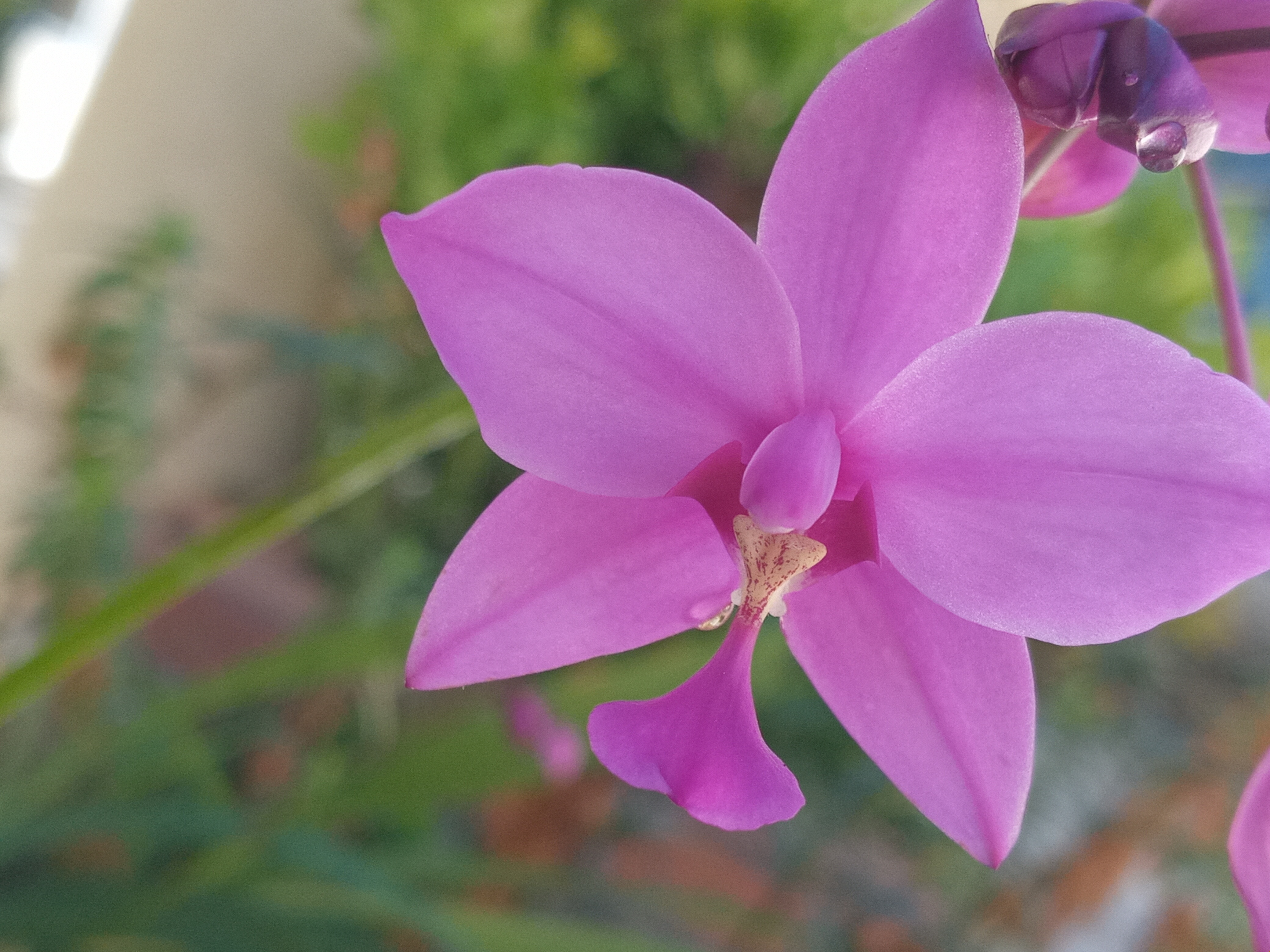
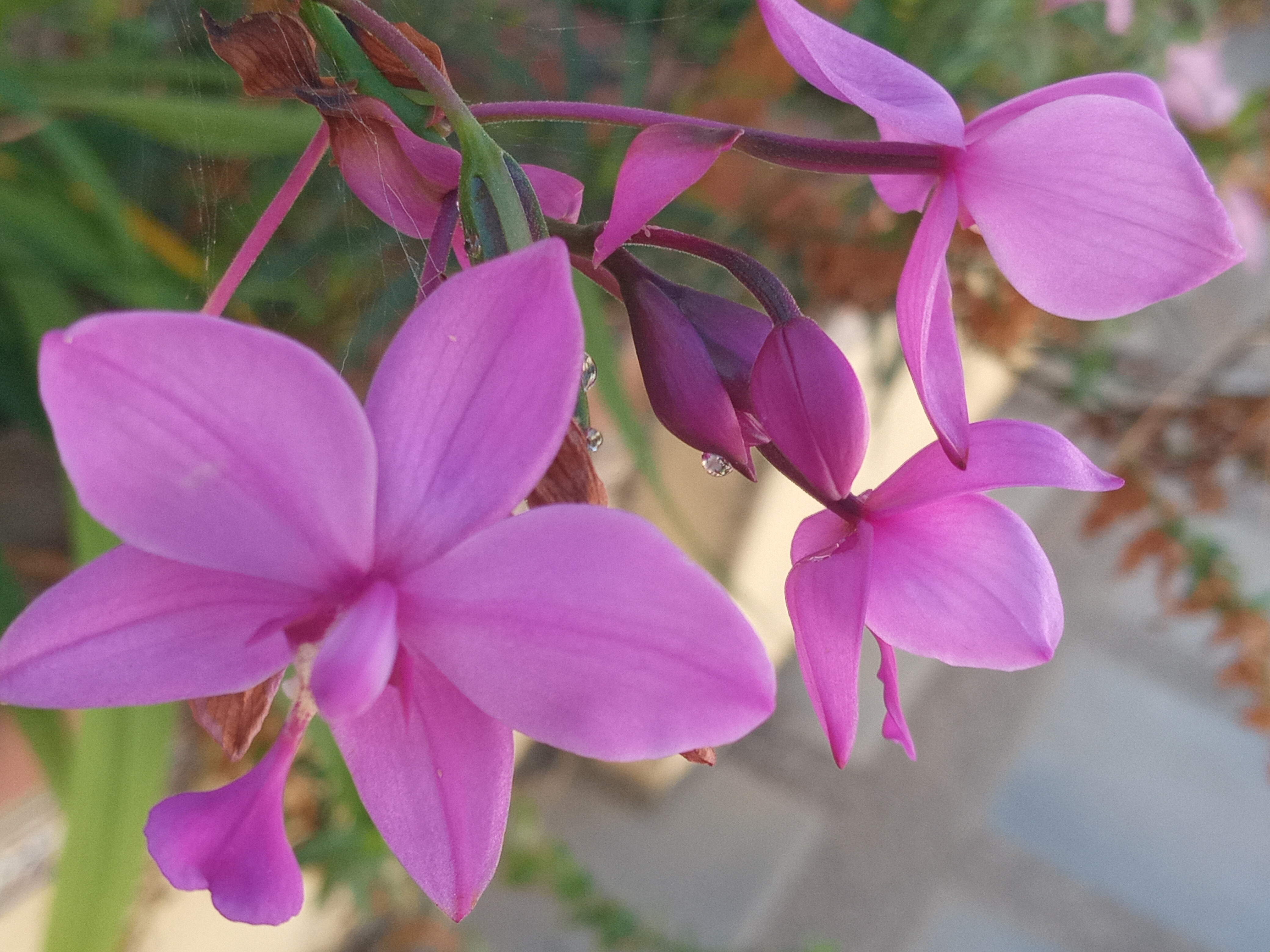
Su nombre científico es Spathoglottis plicata y es uno de los tipos de plantas de hábitos terrestres que pertenecen a la familia de las Orchidaceae y, dentro de esta familia, es uno de los géneros más abundante del mundo. El significado del nombre de su género, Spathoglottis es Flor lengua. Esta palabra proviene del griego spáthe que significa paleta o espata y glotta, es decir, lengua, por la forma del labelo o labio central de la flor en forma de lengua.
El significado de su epíteto específico, plicata, proviene del latín plico, cuyo significado es doblar, plegar o plegada aludiendo a la superficie de las hojas, de esta orquídea, dobladas en forma de abanico.
Its scientific name is Spathoglottis plicata and it is one of the types of plants of terrestrial habits that belong to the Orchidaceae family and, within this family, it is one of the most abundant genera in the world. The meaning of the name of its genus, Spathoglottis is tongue flower. This word comes from the Greek spáthe meaning palette or spathe and glotta, i.e., tongue, from the shape of the labellum or central lips of the flower in the form of a tongue.
The meaning of its specific epithet, plicata, comes from the Latin plico, whose meaning is fold or folded alluding to the surface of the leaves, of this orchid, folded in the shape of a fan.

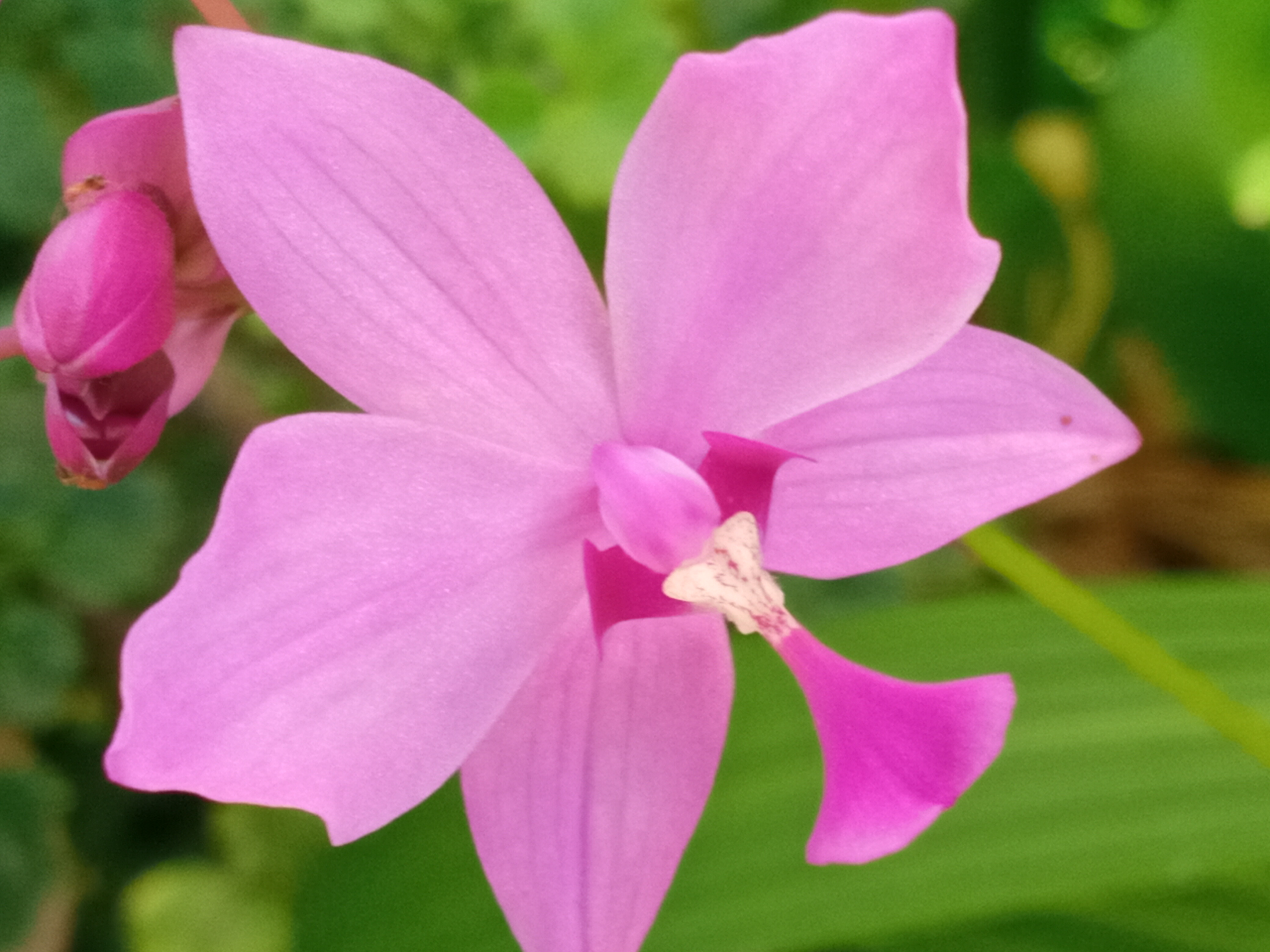
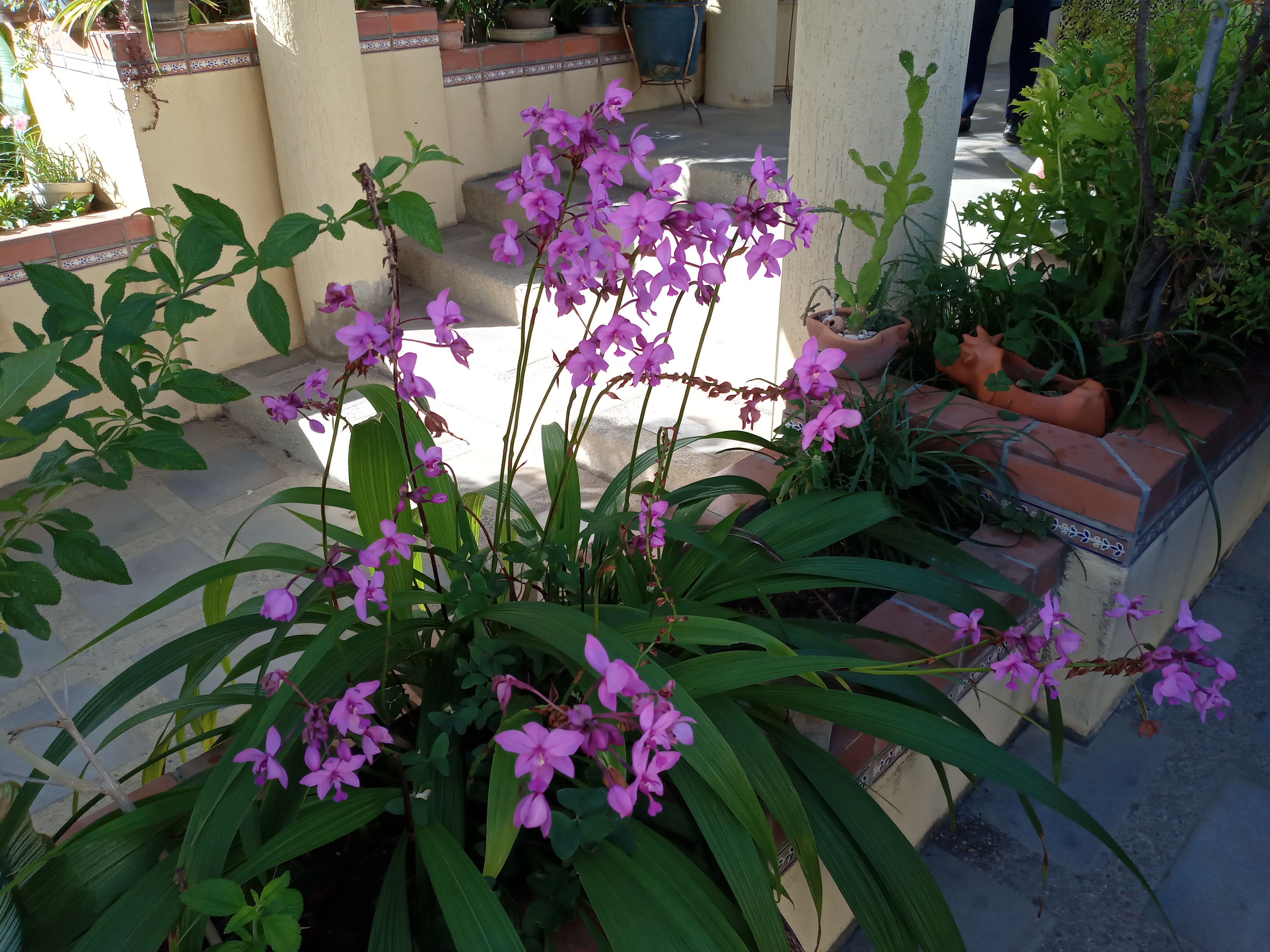
La Orquídea Terrestre Filipina es nativa de Australia, Filipinas, India, Sureste de Asia, Islas Salomon, Tonga, Niue y Samoa. Se ha distribuído y naturalizado en Africa, Florida, Hawai, Puerto Rico y el Caribe. Quienes vivimos en zonas tropicales tenemos la suerte de disfrutar de su floración durante todo el año a diferencia de, por ejemplo, Australia donde su floración ocurre de septiembre a abril.
Es oportuno aclarar que se pueden identificar tipos de orquídeas según sean sus hábitos de crecimiento; en este caso, la Orquídea Filipina, es una planta terrestre ya que crecen como otras plantas, con sus raíces dentro de la tierra y obteniendo sus nutrientes del suelo. A diferencia de otros tipos de orquídeas como, por ejemplo, las epífitas que crecen sobre otros vegetales u objetos utilizándolos como soporte.
The Philippine Ground Orchid is native to Australia, Philippines, India, Southeast Asia, Salomon Islands, Tonga, Niue and Samoa. It has been distributed and naturalized in Africa, Florida, Hawaii, Puerto Rico and the Caribbean. Those of us who live in tropical areas are fortunate to enjoy its bloom all year round, unlike, for example, Australia where its bloom occurs from September to April.
It is appropriate to clarify that types of orchids can be identified according to their growth habits; in this case, the Philippine Orchid, is a terrestrial plant since they grow like other plants, with their roots inside the soil and obtaining their nutrients from the soil. Unlike other types of orchids such as epiphytes that grow on other plants or objects using them as support.


Esta hermosa planta posee unas hojas plisadas de color verde intenso y puede producir una floración de múltiples flores, que se desarrollan a partir de un tallo. Dependiendo de la especie puede variar el color de sus flores: malva, rosa, amarillo y hasta blanco. En casa disfrutamos la variedad con este hermoso color malva. La tenemos ubicada de forma tal que recibe luz solar la mayor parte de la mañana y realizamos su riego cada dos días, evitando que la tierra se seque entre riegos.
Una de las características que más me gustan de la Orquídea Filipina es que lo facilidad con la que puedes propagar. Ya que presenta pseudobulbos, a nivel del suelo, desde donde nacen las hojas y los tallos florales; se pueden tomar grupos de 3 a 4 pseudobulbos y trasplantarlos. También es posible propagarla por medio de la semilla pero, para ello, hay que dejar que las vainas maduren.
La belleza de las Orquídea Filipina les proporciona un gran valor para el cultivo ornamental de jardín pero, también se ha registrado que, en Malasia, sus hojas pueden ser utilizadas como cataplasma para aplicarlas como calmante del dolor articular.
This beautiful plant has pleated leaves of intense green color and can produce a bloom of multiple flowers, which develop from one stem. Depending on the species, the color of its flowers may vary: mauve, pink, yellow and even white. At home we enjoy the variety with this beautiful mauve color. We have it placed in such a way that it receives sunlight most of the morning and we water it every other day, preventing the soil from drying out between waterings.
One of the characteristics that I like most about the Philippine Orchid is the ease with which you can propagate it. Since it has pseudobulbs, at ground level, from where the leaves and flower stems are born, you can take groups of 3 to 4 pseudobulbs and transplant them. It is also possible to propagate it by seed but, for this, it is necessary to let the pods ripen.
The beauty of the Philippine Orchid makes it of great value for ornamental garden cultivation, but it has also been recorded that in Malaysia its leaves can be used as a poultice to soothe joint pain.
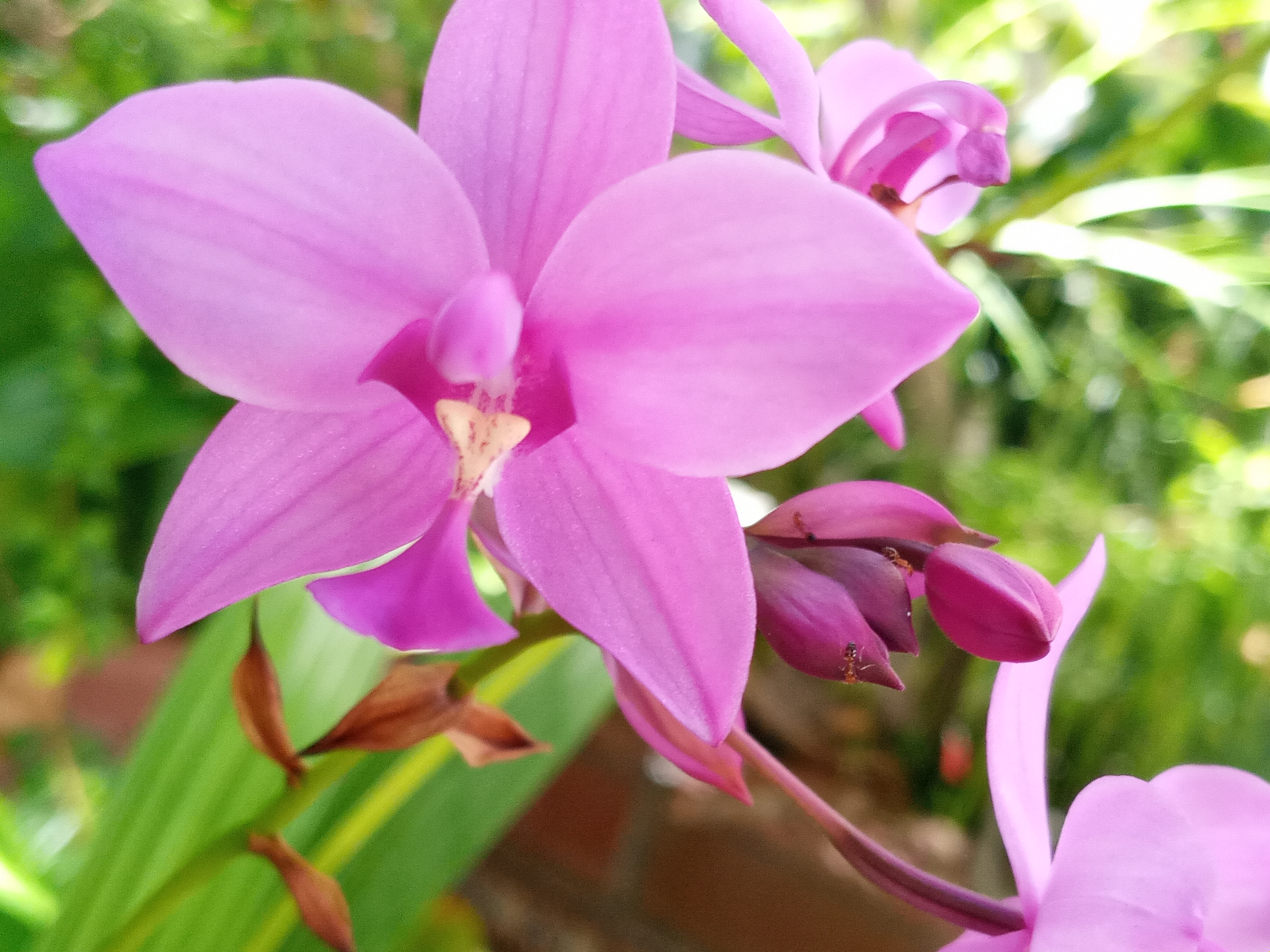
¡Gracias por tu visita! ¡Gracias por leerme!
¡Hasta pronto amigos!
Thank you for your visit! thank you for reading me!
See you soon friends!

Fuentes Consultadas - Sources Consulted
• Cabi
• ITIS - Integrated Taxonomic Information System
• National Parks
• OsCurve Jardines
• Redalyc
• Wikipedia
Traducción realizada utilizando DeepL - Translation using DeepL
| Dispositivo: | SAMSUNG A10s |
|---|---|
| Cámara: | SM-A107M |
| Ubicación: | Lechería, VENEZUELA |
We appreciate your work and your post has been manually curated by @redheadpei on behalf of Amazing Nature Community. It will be added to the weekly botany curation post. Keep up the good work!
Thank you so much @redheadpei and Amazing Nature Community for your support!
Yay! 🤗
Your content has been boosted with Ecency Points, by @redheadpei.
Use Ecency daily to boost your growth on platform!
Support Ecency
Vote for new Proposal
Delegate HP and earn more
Thank you @reheadpei for your appreciation and support of my post. It's very important to me!
Dear @palomot,
Do you mind supporting the HiveBuzz proposal for 2022 so our team can continue its work next year?
You can do it on Peakd, ecency,
https://peakd.com/me/proposals/199
We wish you a Merry Christmas and a Happy New Year!